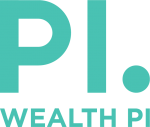A brief on capital stacks and investment vehicles
Everyone owns capital which might be either monetary or non-monetary. Having spent a lot of time on managing and enhancing your capital, why not just leave the monetary capital to a good fund manager to achieve an optimum risk-adjusted return while enjoying your life without worrying about the glitches?
A good fund manager will maximise your wealth through building a pipeline of quality projects to include in your investment portfolio. However, it is not always easy to find the right one to satisfy your risk preference.
Wealth Pi Fund, with the values of ‘Pi’ (Professional & Integrity), strives to bring high-quality investment opportunities to our investors. Investing with Wealth Pi Fund is far beyond money. We talk, we teach, and we help you network. What we offer is not only the best quality projects but also a way to financial freedom as well as a lifestyle after the achievement. Please talk to us so that we will be able to customise the investment strategy to meet your appetite.
What is capital?
In financial terms, capital is defined as ‘money and possessions, especially a large amount of money used for producing more wealth or for starting a new business’ (Cambridge Dictionary 2018). It could be either tangible or intangible. When we talk about ‘capital’, we usually refer to money, and also assets contributed to businesses. However, your intangible capital could be a fortune, which could be intellectual properties (IP), capability and labour, or even as simple as an idea.
1st Mortgage Funds
“If a person or financial organization has a first mortgage on a property, they have the right to be paid first if its owner fails to pay back the money they have borrowed to buy the property” (Cambridge Dictionary 2018). 1st Mortgage loans are multi-layered by placing mortgage over the property and unlimited personal guarantees, which will be registered through a public register.
1st Mortgage Capital over real estates are considered to be the safest compared to other capital stacks, as it is protected by the buffer from Project Profits, Equity Capital, and finally Mezzanine Debt Capital.
However, can we say 1st Mortgage will always be the best place to put your money, and setback and relax? Not really. it is critical to make sure the project itself is of high quality. Otherwise, the buffer may not be as effective as you think if the project fails later.
1st Mortgage Funds over high-quality projects usually provide for an annual return of 7% – 13%.
Mezzanine Funds
Mezzanine Finance provides for “a form of lending to businesses in which a company that is borrowing pays a higher rate of interest than on other loans but has longer to pay back the debt, which may also be changed into shares in the company” (Cambridge Dictionary 2018). Mezzanine Capital is secured by 2nd or any mortgage ranking after over property and unlimited personal guarantees, which will be registered through a public register.
Obviously, Mezzanine Funds present a higher risk profile than that of 1st Mortgage Funds in the same project. Nonetheless, under the assistance of reputable third-party consultants, the risks can be handled effectively with careful supervision and management if the project quality is of a high level.
Quick test: Is Mezzanine Capital always put at a higher risk position than 1st Mortgage Capital – True/False? The answer is false. It is true that the Mezzanine Capital is riskier than the 1st Mortgage Capital in the same project, but Mezzanine Capital in a high-quality and well-managed project could be exposed to an overall higher level of security than a 1st Mortgage Capital in another.
Not surprisingly, Mezzanine Funds over high-quality projects usually provide for an annual return of 12% – 16%, which is about 3%-5% above 1st Mortgage Funds’ return due to exposure to a thinner buffer.
Preferred Shares
Preferred Shares, or sometimes referred to as ‘Preferred Stock’ or ‘Preferred equity, is “a class of ownership in a corporation that has a higher claim on its assets and earnings than common stock”, which “generally has a dividend that MUST be paid out before dividends to common shareholders, and the shares usually do not carry voting rights” (investopedia.com). In accounting terms, Preferred Share is deemed as ‘debt’ rather than ‘equity’ with regular and fixed payments of income and repayment of principal.
It is common that the Preferred Shareholders will place caveats over the property through a public register, and impose covenants over the borrowing entity. This is to prevent it from securing any other form of debts so that technically the Preferred Shares shall only rank behind 1st and 2nd mortgage debt.
Therefore, similar to Mezzanine Funds, Preferred Shares are exposed to Preferred Shareholders are exposed to a higher level of risk than mortgage debt holders as it ranks behind mortgagees. However, most Preferred Shares are secured by unlimited personal guarantees as well. Besides, if the registered mortgagees are reputable, such as banks, the quality of the projects could be re-verified by the large institutions which would be a risk control as well.
Nevertheless, as Preferred Share is not registered with the public registers, it usually provides an annual return of 16% – 22% that is usually higher than the registered mortgage funds.


